LG V30 vs. HTC U11: head-to-head with one of Android's most impressive phablets
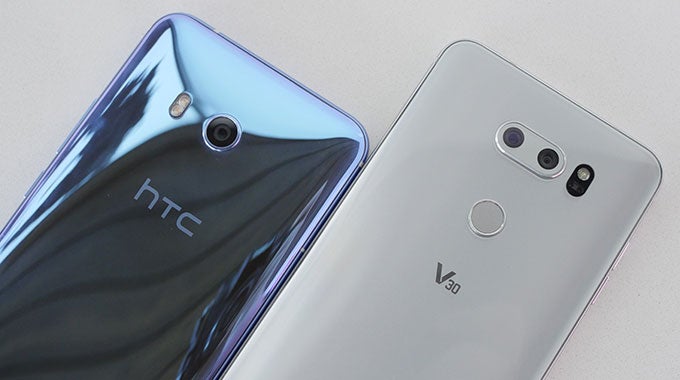
A few months back, we saw HTC drop its familiar One-series flagships with their iconic metal bodies for the all-new U11 hero phone, embracing a dazzling color-shifting glass-encased construction and introducing a unique new “squeeze” mechanic: Edge Sense.
LG already started playing around with new looks for its phones with the G6 and its ultra-wide screen, but that was just the tip of the iceberg, and today we're talking about the design of the V30. Like the G6, the V30 features a face-filling 18:9-aspect screen, but maybe even more shockingly, drops the secondary “ticker” display that's been around since the days of the V10.
Do all these changes make these two successful phones? And more to the point, which are you likely to be happier picking up for yourself? Take a look at what we learned when going hands-on with both these flagships.
Design
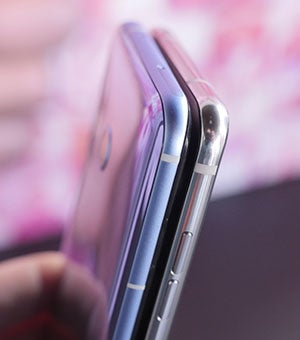
Each approaches key features from their own direction, like how the V30 puts its fingerprint scanner on the rear, while the U11 opts for under-the-screen orientation. And while the U11's rear glass is a colorful spectacle – arguably one of the phone's most attractive features – the V30 is much more restrained with its color schemes.
Both phones feature curved-edge glass – though nothing so extreme as Samsung-style Edge displays – but again each with its own quirks. The V30 goes from curved edge to flat back quite quickly, while the U11's curves are more gradual, giving the phone's whole back a more sloped feel.
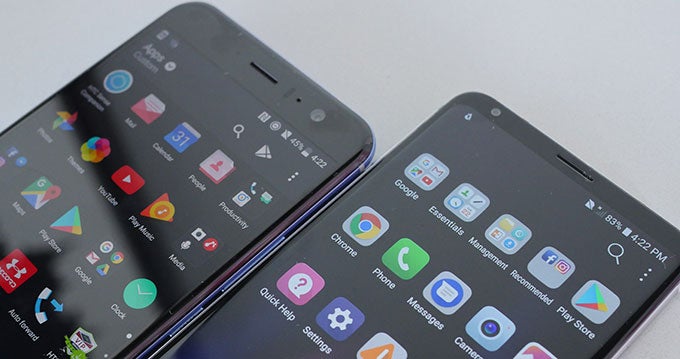
Display
Maybe the most critical feature differentiating these handsets are their displays. Not only are they different shapes – the U11 representing classic smartphone looks, while the V30 offers a glimpse of the shape of things to come – but different sizes, with the V30's six-inch screen pushing past HTC's 5.5-incher
Now, both are good screens, and sizes that are ideal for productivity-focused users. But this is a comparison, and it's becoming harder and harder to deny that 16:9 displays like HTC's just seem unexciting.
LG's in contrast, isn't just bigger – it takes up more of the phone's body and instantly feels a whole lot more optimal than HTC's. It's a little sad that manufacturers can't just keep on tweaking old designs and generate new interest, but when phones like the V30 come along, you've got to change strategy or get left behind.
The one possible negative side to the V30's new screen is the absence of the secondary screen we got on the first two generations of this hardware. Some users probably loved that extra functionality, and while they'll miss it, LG does keep it around in software, with a bubble you can tap to bring up a floating bar offering much of that second-screen functionality.
Interface and Functionality

The U11, meanwhile, more directly embraces extra functionality through phone hardware, as it's HTC's first model to feature what the manufacturer calls Edge Sense. A series of pressure sensors embedded in the U11's body detect when you're squeezing the phone and can use this to trigger app shortcuts. It's all very configurable, and while there's no shortage of apps you can use with Edge Sense, we also can't ignore that the feature is a little one-note; it's basically an extra hardware button like the BlackBerry KEYone scored, only with squeezing instead of pressing.
Performance
The LG G6 was a very nice early-2017 phone, but the timing of its release also put it at a disadvantage compared to other new flagships; while they preferred to run Qualcomm's hot new Snapdragon 835 chip, the G6 went with the older 821.
The V30 has to make no such sacrifice, and comes armed with the same top-shelf 835 processor HTC employs in the U11. The two phones are also on the same playing field when it comes to memory, each with a minimum 4GB of RAM, and while it has a less direct impact on performance, both offer the same 64GB base storage level.
We're going to have to spend a little more time with the V30 to see just what LG may have been able to squeeze out of it through some clever software manipulation, but just looking at the raw silicon, these two phones are quite evenly matched.
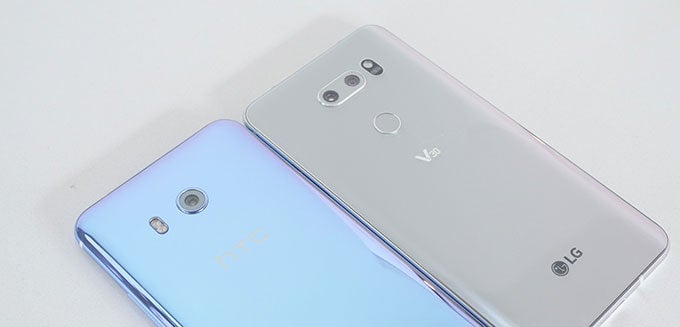
Camera
So far, the V30 may sound like a solid phone, but maybe not one that's particularly engaging; what's the hook, after all? There's no more secondary screen, but at least LG's emphasis on sound quality returns. But there's also been one more area where V-series phones have shined, and that's with their camera hardware. This year, that's once again the case as the V30 returns with dual main camera hardware.
While the idea of dual cameras on a V-family phone is nothing new, the V30 does get to enjoy some important upgrades, like a new low-distortion lens package – and when you're dealing with an exceptionally wide-angle lens like the V30 supports, that's a big deal.
Just having that choice of wide-angle or telephoto puts the V30 at an advantage compared to the U11 with its single camera. Now, that 12MP sensor HTC uses is a good one, but the whole picture-taking experience on the U11 just feels much simpler than LG can offer – and not necessarily in a good way.
Beyond upgraded camera hardware, LG also throws in some cool new camera software tricks, including a smooth smooth-in-on-subject effect and Cine Video stylistic colorization features.
Conclusion
While we started out thinking about the HTC U11 and LG V30 existing in much the same universe, as we start looking at individual features we keep spotting little way after little way that LG's phone feels like the superior, more functional, more polished handset. Compared to the U11, the V30 offers an analog headphone jack, has a bigger battery, supports wireless charging, and plenty other things that are simply lacking or are less well-done on the U11.


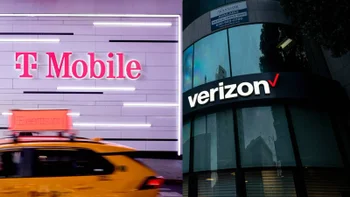
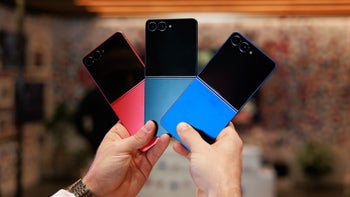
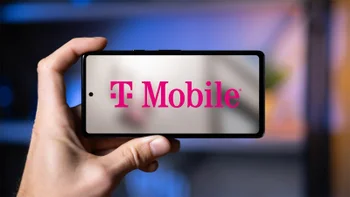


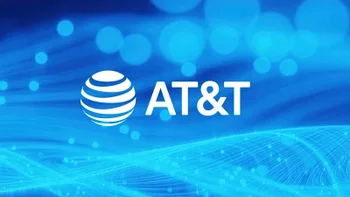

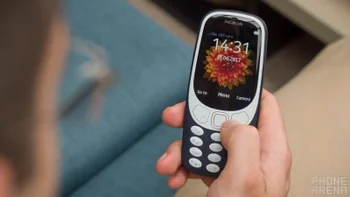


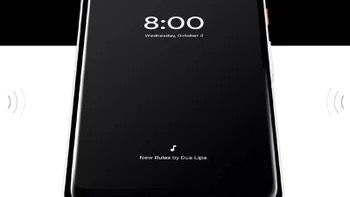
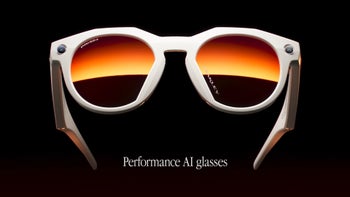
Things that are NOT allowed:
To help keep our community safe and free from spam, we apply temporary limits to newly created accounts: